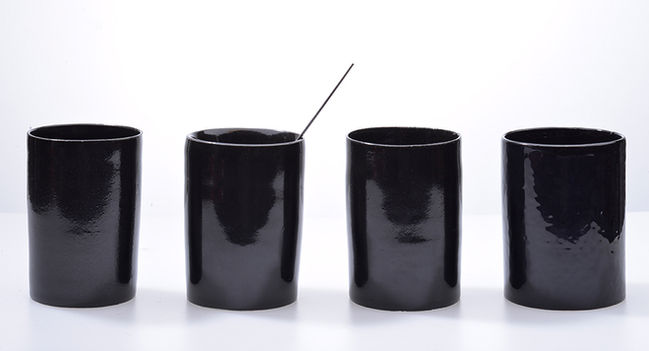Miriam
Schlägel
5 ≤ 4
Someone of us came up with the idea, to ask the blind man if he would be happy if he had eyes.
"If my curiosity did not dominate me," he said, "I would rather like to have long arms. It seems to me that my hands would then teach me better about what is happening on the moon than your eyes or your telescopes." Denis Diderot, Philosophische Schriften, p. 18
The first impulse for the initial conceptual approach was an experience with blind people. As blind live without any visual influences, their perception and interaction with objects is very profound. Furthermore they develop advanced abilities and strategies, based on an intensified practice of their residual senses. In course of the research the term “aesthetic" was continuously present and became a subject of the project.
As sight has a predominant role in our world aesthetic gets often misinterpreted as beauty, and is mainly placed in the context of art. Since blindness is branded as a disability profound investigations of sensorial impressions regarding aesthetic values, free from visual parameters, have been barely taken into consideration up to now.
The aim of this project is to develop consciousness for a perception with all our senses, reinforcing the relationship towards user as well as designer and the daily objects and appreciating the pleasure of design through recognizing and identifying objects based on their details and property which leads towards a different notion of reality which is a matter of perception as well.
The final outcome of this project are 4 cups based on smelling, listening, feeling and tasting.
„Smell“ is attracting the nose and invite the cup user to drink tea more often or as well perceive the user with the sensation of calmness and relax by just smelling the aroma spread by the cup. „Listen“ animates the user in a playful way to perceive fully conscious the sound of tea filling the cup. By using „Feel“ the tea drinker can feel on the upper part of the cup the heat of the hot beverage as well as warm up his hands, where on the lower part the cup will stay cool and can be touched without any problem. By collecting the aromas wich are normally disappearing with the steam while the tea is cooling down, „Taste“ is created to keep the flavor inside the cup. Because of the connection of our flavor receptors in nose, throat and mouth a tea which is smelling more intense will also taste more.








